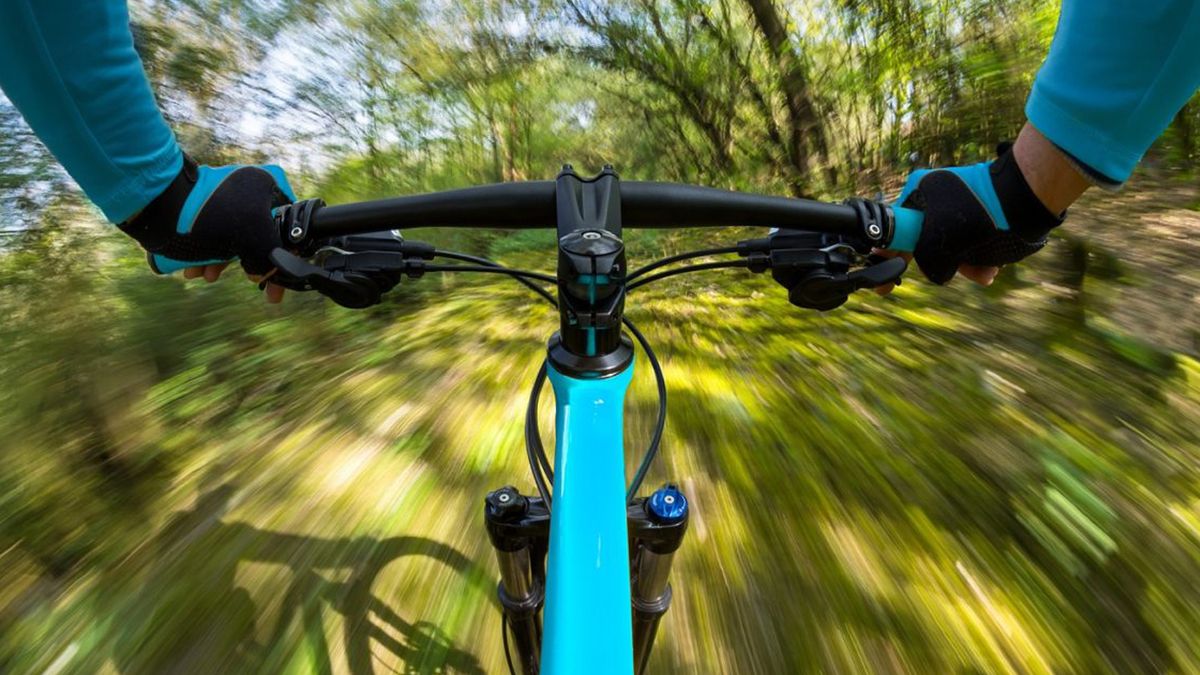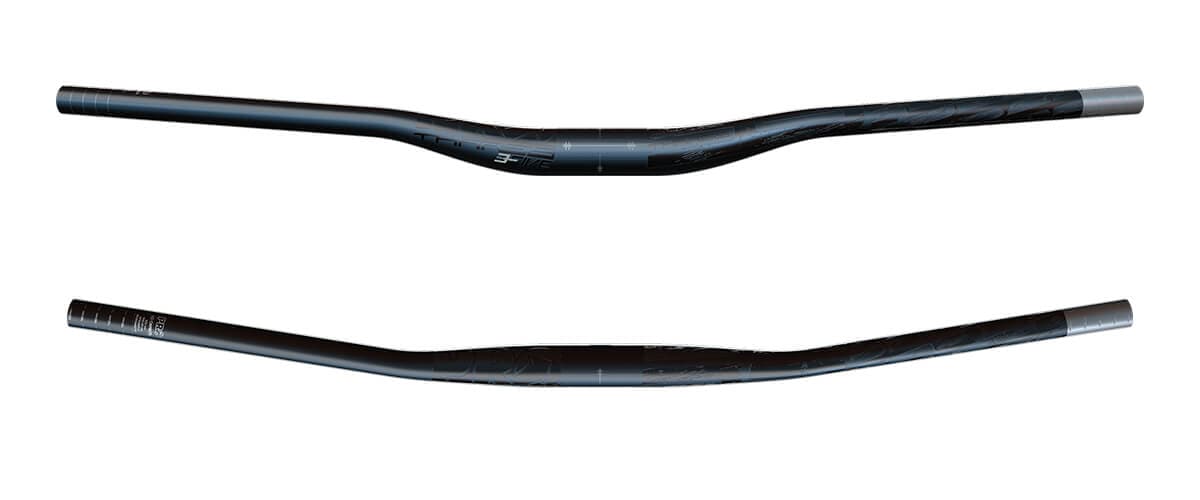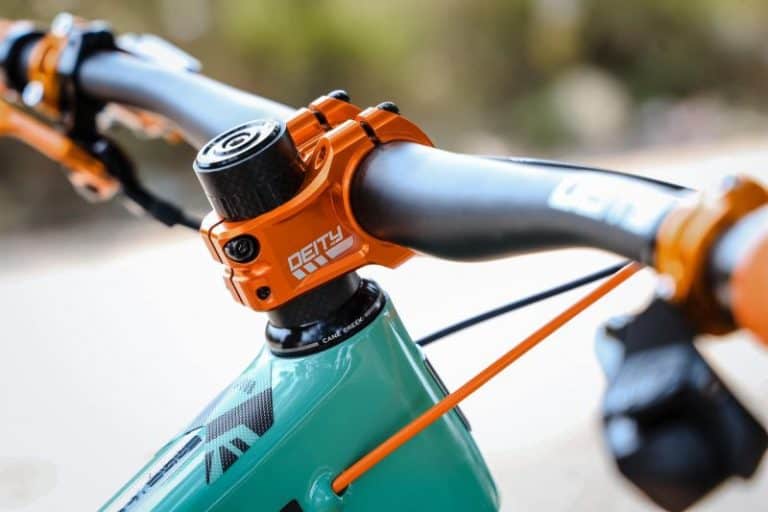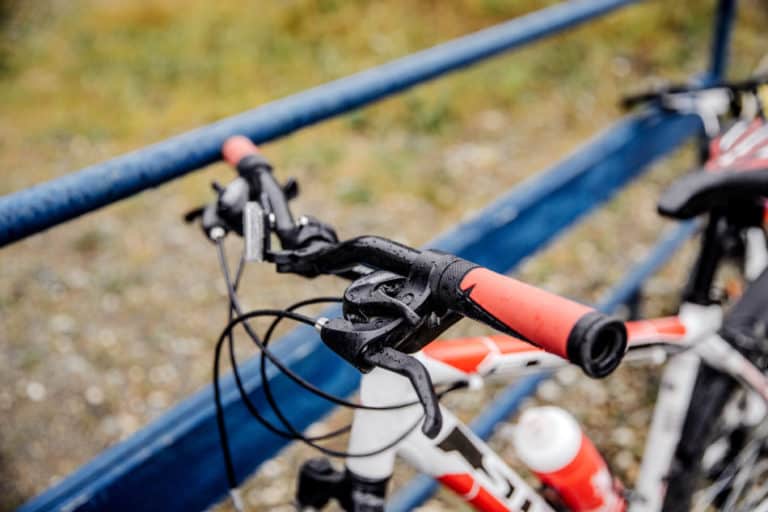Why Handlebar Width Matters for a Better Ride
In the world of mountain biking, a well-chosen handlebar width can make a significant difference in a rider’s comfort, control, and overall performance. A handlebar that is too narrow or too wide can lead to discomfort, fatigue, and even affect the bike’s handling and stability. On the other hand, a handlebar width that is tailored to a rider’s specific needs can improve their riding experience, boost confidence, and enhance their overall performance.
A mountain bike handlebar width that is compatible with a rider’s body geometry can reduce fatigue, discomfort, and even prevent injuries. For instance, a rider with shorter arms may prefer a narrower handlebar to reduce strain on their shoulders and wrists, while a rider with longer arms may prefer a wider handlebar for more leverage and control. Moreover, a well-chosen handlebar width can improve a bike’s responsiveness, maneuverability, and stability, making it easier to navigate technical terrain and maintain speed.
When it comes to mountain biking, control and comfort are crucial for an enjoyable and successful ride. A handlebar width that is too narrow can make the bike feel twitchy and unstable, while a handlebar width that is too wide can make the bike feel sluggish and unresponsive. By selecting a handlebar width that is tailored to their specific needs, riders can achieve the perfect balance of control and comfort, allowing them to ride with confidence and precision.
Understanding Your Riding Style and Preferences
When it comes to selecting the ideal mountain bike handlebar width, understanding your riding style and personal preferences is crucial. Different riding styles, such as cross-country, enduro, and downhill, require distinct handlebar widths to optimize performance and comfort. For instance, cross-country riders often prefer narrower handlebars for improved aerodynamics and efficiency, while downhill riders opt for wider handlebars for increased control and stability.
Personal preferences also play a significant role in determining the ideal handlebar width. Some riders prioritize comfort, seeking a handlebar width that reduces strain on their shoulders and wrists. Others focus on control, opting for a handlebar width that provides more leverage and precision. Aerodynamics is another key consideration, particularly for riders who frequent high-speed descents or engage in competitive racing.
Professional riders and enthusiasts alike benefit from tailored handlebar widths. For example, downhill legend Aaron Gwin is known for his preference for wide handlebars, which provide him with the control and stability he needs to dominate technical terrain. Similarly, cross-country specialist Nino Schurter favors narrower handlebars, which enable him to maintain speed and efficiency over long distances.
By understanding your riding style and personal preferences, you can make informed decisions about your mountain bike handlebar width. Whether you’re a seasoned pro or an enthusiastic beginner, selecting the right handlebar width can significantly improve your riding experience, reduce fatigue, and enhance your overall performance.
How to Choose the Perfect Handlebar Width for Your Mountain Bike
Selecting the optimal mountain bike handlebar width requires careful consideration of several factors. By following a step-by-step guide, riders can ensure they find the perfect width for their needs, improving their overall riding experience and performance.
Step 1: Determine Your Rider Height and Arm Length
Rider height and arm length are crucial factors in determining the ideal handlebar width. Taller riders with longer arms may prefer wider handlebars, while shorter riders with shorter arms may prefer narrower handlebars. Measure your arm length from the shoulder to the wrist to get an accurate estimate.
Step 2: Consider Your Bike Type and Riding Style
Different bike types, such as cross-country, enduro, and downhill, require distinct handlebar widths. Cross-country bikes often feature narrower handlebars for improved aerodynamics, while downhill bikes have wider handlebars for increased control and stability. Consider your riding style and the type of terrain you frequent to determine the ideal handlebar width.
Step 3: Measure and Test Different Widths
Measure your current handlebar width and test different widths to find the perfect fit. Many bike shops offer demo handlebars or test rides, allowing you to experiment with different widths before making a purchase. Pay attention to how the handlebar width affects your comfort, control, and overall performance.
Step 4: Consider Additional Factors
Other factors, such as handlebar rise, sweep, and material, can also impact the ideal handlebar width. Consider the type of riding you’ll be doing most often and choose a handlebar width that complements your riding style and bike geometry.
By following these steps, riders can find the perfect mountain bike handlebar width, improving their comfort, control, and overall performance. Remember to experiment and test different widths to find the ideal fit for your unique needs.
Popular Handlebar Widths for Mountain Bikes: A Review of Top Brands
When it comes to selecting the perfect mountain bike handlebar width, riders have a wide range of options from top brands. In this review, we’ll explore popular handlebar widths from well-known brands, highlighting their features, benefits, and ideal use cases.
Trek’s Bontrager Line Pro Handlebar, available in widths ranging from 720mm to 800mm, is a popular choice among cross-country and trail riders. Its lightweight design and ergonomic shape provide improved comfort and control. The Bontrager Line Pro is ideal for riders seeking a balance between comfort and performance.
Specialized’s S-Works Carbon Handlebar, offered in widths from 750mm to 820mm, is a favorite among enduro and downhill riders. Its stiff and responsive design provides exceptional control and precision, making it perfect for high-speed descents and technical terrain.
Santa Cruz’s Carbon Handlebar, available in widths from 780mm to 840mm, is designed for aggressive trail and enduro riding. Its unique shape and ergonomic design provide improved comfort and control, while its lightweight construction reduces fatigue and enhances overall performance.
Other popular handlebar widths from top brands include:
- RockShox’s Pike Handlebar, available in widths from 740mm to 800mm, ideal for trail and enduro riding.
- SRAM’s XX1 Handlebar, offered in widths from 760mm to 820mm, perfect for cross-country and trail riding.
- ENVE’s M6 Handlebar, available in widths from 780mm to 840mm, designed for aggressive trail and enduro riding.
When selecting a handlebar width, it’s essential to consider factors such as rider height, arm length, bike type, and riding style. By choosing a handlebar width tailored to your unique needs, you can improve your overall riding experience, reduce fatigue, and enhance your performance.
The Impact of Handlebar Width on Bike Handling and Performance
When it comes to mountain biking, handlebar width plays a crucial role in bike handling, stability, and speed. A well-chosen handlebar width can significantly improve cornering, climbing, and descending capabilities, while a poorly chosen width can lead to decreased performance and increased fatigue.
From a physics perspective, handlebar width affects the bike’s rotational inertia, which is the tendency of an object to resist changes in its rotation. A wider handlebar width increases the rotational inertia, making the bike more stable and easier to control, particularly at high speeds. Conversely, a narrower handlebar width reduces the rotational inertia, making the bike more agile and responsive to steering input.
In terms of cornering, a wider handlebar width provides more leverage, allowing riders to initiate turns with greater ease and precision. This is particularly beneficial for downhill and enduro riders, who require maximum control and stability when navigating tight, technical corners.
On the other hand, a narrower handlebar width is often preferred by cross-country riders, who prioritize aerodynamics and efficiency. A narrower width reduces air resistance, allowing riders to maintain higher speeds with less effort.
When it comes to climbing, a well-chosen handlebar width can also make a significant difference. A wider width provides more leverage, making it easier to power through steep, technical climbs. Conversely, a narrower width can make climbing more efficient, as riders can maintain a more aerodynamic position and reduce energy expenditure.
In conclusion, the impact of handlebar width on bike handling and performance cannot be overstated. By selecting a handlebar width tailored to their riding style and preferences, riders can improve their overall performance, reduce fatigue, and enhance their riding experience.
Common Mistakes to Avoid When Choosing a Handlebar Width
When selecting a mountain bike handlebar width, riders often make mistakes that can compromise their riding experience. By being aware of these common pitfalls, riders can avoid them and find the perfect handlebar width for their mountain bike.
One of the most common mistakes is neglecting riding style. Different riding styles, such as cross-country, enduro, and downhill, require distinct handlebar widths. For example, downhill riders often prefer wider handlebars for increased control and stability, while cross-country riders may prefer narrower handlebars for improved aerodynamics.
Another mistake is ignoring bike geometry. The geometry of the bike, including the head tube angle, fork offset, and wheelbase, affects the handling and stability of the bike. Riders must consider these factors when selecting a handlebar width to ensure optimal performance.
Prioritizing aesthetics over performance is also a common mistake. While a certain handlebar width may look appealing, it may not provide the necessary comfort, control, and performance for the rider. Riders must prioritize their needs and preferences over aesthetics.
Failing to test different handlebar widths is another mistake. Riders should experiment with different widths to find the one that provides the best fit, comfort, and performance. This can be done by borrowing handlebars from friends, testing demo bikes, or purchasing a handlebar with adjustable width.
Finally, riders should avoid relying solely on manufacturer recommendations. While manufacturers provide recommended handlebar widths, these may not be suitable for every rider. Riders must consider their individual needs and preferences when selecting a handlebar width.
By avoiding these common mistakes, riders can find the perfect mountain bike handlebar width for their needs, improving their overall riding experience and performance.
Upgrading Your Handlebars: A Cost-Effective Way to Improve Your Ride
Upgrading to a new mountain bike handlebar width can be a cost-effective way to improve comfort, control, and overall performance. By selecting a handlebar width tailored to their riding style and preferences, riders can experience a significant improvement in their riding experience.
One of the primary benefits of upgrading to a new handlebar width is improved comfort. A well-chosen handlebar width can reduce fatigue and discomfort, allowing riders to ride for longer periods without feeling exhausted. This is particularly important for riders who participate in long-distance events or multi-day rides.
In addition to improved comfort, a new handlebar width can also enhance control and stability. A handlebar width that is too narrow or too wide can compromise bike handling, making it more difficult to navigate technical terrain. By selecting a handlebar width that is optimized for their riding style, riders can improve their cornering, climbing, and descending capabilities.
Upgrading to a new handlebar width can also be a cost-effective way to improve performance. Rather than purchasing a new bike, riders can upgrade their existing handlebars to achieve improved performance and comfort. This can be particularly beneficial for riders who are on a budget or who are looking to breathe new life into their existing bike.
To upgrade efficiently and cost-effectively, riders should consider the following tips:
- Research different handlebar widths and read reviews from other riders to find the best option for their needs.
- Consider purchasing a handlebar with adjustable width to allow for fine-tuning and customization.
- Look for handlebars with ergonomic features, such as sweep and rise, to improve comfort and control.
- Consult with a professional bike fitter or mechanic to ensure proper installation and setup.
By upgrading to a new mountain bike handlebar width, riders can experience a significant improvement in comfort, control, and performance. With careful research and consideration, riders can find the perfect handlebar width for their needs and enjoy a more enjoyable and rewarding riding experience.
Conclusion: Finding the Perfect Balance for Your Mountain Bike
In conclusion, the importance of handlebar width in mountain biking cannot be overstated. A well-chosen mountain bike handlebar width can significantly improve control, comfort, and overall performance, leading to a more enjoyable and rewarding riding experience.
By understanding their riding style and preferences, riders can select a handlebar width that is tailored to their needs. Whether it’s cross-country, enduro, or downhill, the right handlebar width can make all the difference in cornering, climbing, and descending capabilities.
When choosing a handlebar width, riders should consider factors such as rider height, arm length, and bike type, and avoid common mistakes like neglecting riding style or prioritizing aesthetics over performance. By following a step-by-step guide and testing different widths, riders can find the perfect balance for their mountain bike.
Upgrading to a new handlebar width can be a cost-effective way to improve comfort, control, and performance, and with the right tips and techniques, riders can upgrade efficiently and cost-effectively.
In the end, finding the perfect mountain bike handlebar width is a process that requires patience, experimentation, and a willingness to try new things. By taking the time to find the right width, riders can unlock their full potential and enjoy a more comfortable, controlled, and exhilarating ride.








